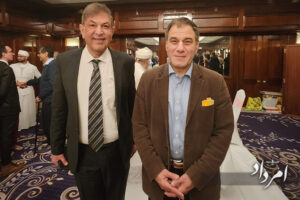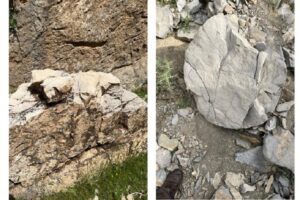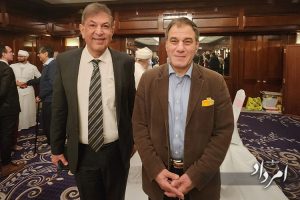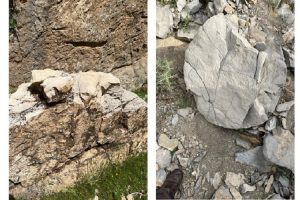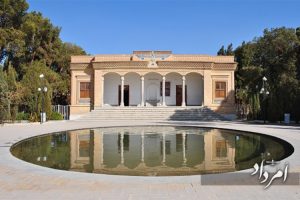While alarming reports of land subsidence in the historical regions of Fars province, particularly in Naqsh-e Rostam, deeply concern all admirers of Iran’s ancient heritage, there is now news that one of Iran’s notable singers, Alireza Ghorbani, plans to hold a concert at Persepolis! Experts believe that this event, due to the sound vibrations it will generate, may potentially harm this global landmark.
It is clear that when sound systems amplify the voices of singers and percussion instruments at high frequencies, they can cause damage to structures, especially historical and ancient ones. It raises questions how the singer and his accompanying group overlook such an obvious issue, or attempt to justify it with extensive explanations. It’s a surprising issue we’re addressing. Even officials at the Persepolis World Heritage site believe in this matter and state, “Currently, the issue of the impact of sound on the structures of Persepolis is raised, which is why the music concert venue is located outside the Persepolis area, 50 meters away and 17 meters below the surface of the platform.” This was spoken by Alireza Askari, the director of the Persepolis World Heritage site.
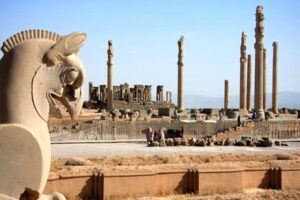
The question remains: why risk holding a concert at a site like Persepolis, where there’s a significant risk of damaging its historical integrity? Could the concert have been held elsewhere?
Interestingly, the director of Persepolis asserts, “Sound vibrations theoretically shouldn’t harm the structure, and we’re testing sound frequencies. If vibrations pose any risk to Persepolis, we’ll stop the music immediately. Our priority is protecting historical sites, and as director, that’s my sole responsibility” (Hamshahri Online).
Isn’t it surprising that despite potential risks, the concert was permitted? Shouldn’t we reconsider allowing concerts at Persepolis to avoid such risks altogether?
The upcoming music concert is planned just fifty meters from Persepolis’ platform, posing significant risks. The director acknowledges Persepolis is unsuitable due to potential sound impacts, necessitating sound sources be relocated outside the site. This precaution has been incorporated into the concert planning (Hamshahri Online).
Experts have diverse opinions on holding concerts at Persepolis.
Opponents argue that such events pose risks to historical structures. They highlight that loud sound vibrations can physically damage building materials, cause structural vibrations leading to cracks or collapses, and indirectly impact local ecosystems by disturbing wildlife. Continuous noise can also degrade protective materials, reducing the site’s resilience to environmental factors like rain and wind. They stress the need for precise sound management during events at historical sites to prevent potential damage (Mehr News Agency Report).
Mohammad Aminipour, a historical structures expert, emphasizes the meticulous assessment needed for music concerts. He explains how sound vibrations can penetrate and harm ancient structures, necessitating laboratory-based research to measure their impact. He contrasts today’s amplified sound at concerts, which induces vibrations that historically had no reinforcing technology to mitigate them (Hamshahri Online).
Rajabali Labbaf Khaniki, an archaeologist, believes that holding a concert at Persepolis would not cause significant harm. He argues that factors such as heat, humidity, severe vibrations, and other environmental and human impacts pose greater threats to Iran’s ancient artifacts and cultural heritage than sound vibrations from a concert. Khaniki stresses the importance of expert consultation and careful conservation practices to ensure the preservation of Iran’s architectural and cultural treasures like Persepolis. He emphasizes that any activities at these valuable sites must be approached with meticulous planning and consideration of their potential impacts (Iran Online).
The organizers of the concert, led by Alireza Ghorbani, have reassured that extensive scientific studies and consultations with conservation experts have been conducted over months to safeguard Persepolis. They have taken meticulous measures to ensure no harm or disruption to the ancient structures. These include selecting a distant venue orientation, minimizing gatherings, and using headphones instead of speakers to prevent vibrations from affecting the historical site (Hamshahri Online).
It is indeed a valid concern whether it would be better to relocate the music concert to another venue to prevent any potential harm to our historical heritage, even if the risk of damage to Persepolis is minimal. The head of the Persepolis World Heritage Site responded to questions about why the concert wasn’t canceled, explaining that despite discussions advocating cancellation, the event proceeded due to its cultural significance and authorization from Tehran authorities. Suggestions were made to relocate the concert to places like Pardis or Setareh parking, but these options were not feasible due to prior planning and the need to use the ceremonial platform for lighting effects.
The possibility of reconsidering the issued permits and allowances for the concert is being discussed to ensure the preservation of our historical sites. Nonetheless, Alireza Ghorbani has obtained permission to hold the concert at a distance of 50 meters from Persepolis’ ceremonial platform on July 9th. He is the only organizer so far to secure such a permit for Persepolis, despite previous desires from artists like Mohammad Reza Shajarian, Shahram Nazeri, Yanni, and Kitaro, none of whom were granted permission to hold concerts at Persepolis.




